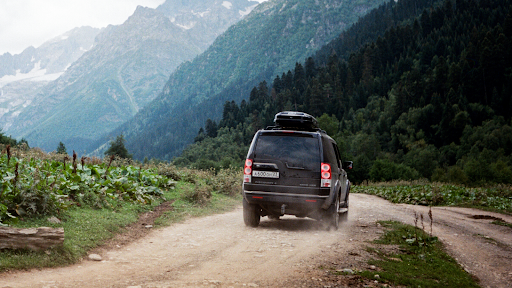Mountain driving, with its sharp curves and steep grades, offers both breathtaking views and unique challenges. This article will explore the intricacies of driving in mountainous terrains and how Sailun tires are specifically designed to tackle these challenges, delivering both safety and performance.
Navigating the challenges of mountain roads
Mountain roads, known for their unpredictability, pose many challenges for drivers. The terrain is often marked by sharp turns and sudden steep inclines that test a vehicle’s handling and a driver’s skill. Navigating these tight corners requires precision and an understanding of how to effectively manage a vehicle’s momentum.
Weather variability and road hazards
In addition to the physical challenges of mountain roads, variable weather conditions impact driving safety. Changes in weather can lead to slippery surfaces, reduced visibility, and unexpected obstacles, like rockfalls.
Steep ascents and descents demand careful speed management and braking control to prevent accidents. Drivers must be prepared for sudden changes in road conditions and remain vigilant to respond safely to these environmental challenges.
Vehicle preparation: choosing the right tires
Before embarking on a mountain road trip, it’s essential to prepare your vehicle, particularly when it comes to tire selection. The right tires are critical for navigating the unique challenges of mountain driving. Sailun TerraMax RT tires, with their deep treads and proprietary anti-tear rubber compound, offer robust performance in rugged conditions.
Their design features, including aggressive shoulder blocks and a squared profile, enhance durability, ensuring these tires can withstand the harsh demands of mountainous terrain.
Durability and performance in rugged conditions
Sailun’s TerraMax RT tires are built to endure the rigors of mountain driving. They’re specifically designed to handle impacts, resist damage from sharp objects, and adapt to rough terrains. These characteristics make them a dependable choice for adventurous drivers seeking to explore mountainous landscapes.
With these tires, drivers can confidently tackle steep climbs, navigate rocky paths, and enjoy the exhilarating experience of mountain driving with enhanced safety and reliability.
Understanding mountain weather patterns
Mountain weather is notoriously unpredictable and can change rapidly, impacting driving conditions. Mountains can create their own weather systems, leading to sudden rain, snow, or fog, regardless of forecasts.
Altitude also affects temperature and visibility. Preparing for a variety of weather conditions, from clear skies to sudden storms, is key. Drivers should be aware of the local weather trends and keep an eye on real-time updates to navigate safely through mountain terrains.
Essential mountain driving techniques
Navigating mountain roads safely requires specific driving techniques. Maintaining a steady speed and using a lower gear on steep inclines can help manage the vehicle’s power and control.
For descents, downshifting reduces reliance on brakes and prevents overheating. On sharp turns, the “slow in, fast out” technique is beneficial—slowing down before a curve and accelerating out helps maintain control.
Additionally, being mindful of the vehicle’s clearance and understanding how to safely traverse uneven surfaces is crucial. Familiarity with these techniques can greatly enhance safety and enjoyment during mountain driving adventures.
It’s also important to know the vehicle’s capabilities and not to push it beyond its limits, especially on exceptionally steep slopes. These practices ensure a balance between maintaining momentum and having control.
Navigating off-road challenges with confidence
Confidently navigating off-road challenges requires both skill and preparation. Understanding the vehicle’s 4×4 system and how to use it effectively in various terrains is important.
Reading the terrain and adjusting driving techniques accordingly is crucial. For instance, when traversing rocky areas, slow and steady driving with precise wheel placement is advisable.
Maintaining momentum is key to preventing getting stuck in muddy or sandy conditions. Additionally, having a basic understanding of recovery techniques and carrying appropriate gear can be invaluable in difficult situations.


